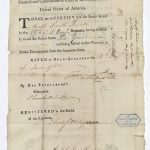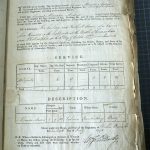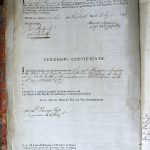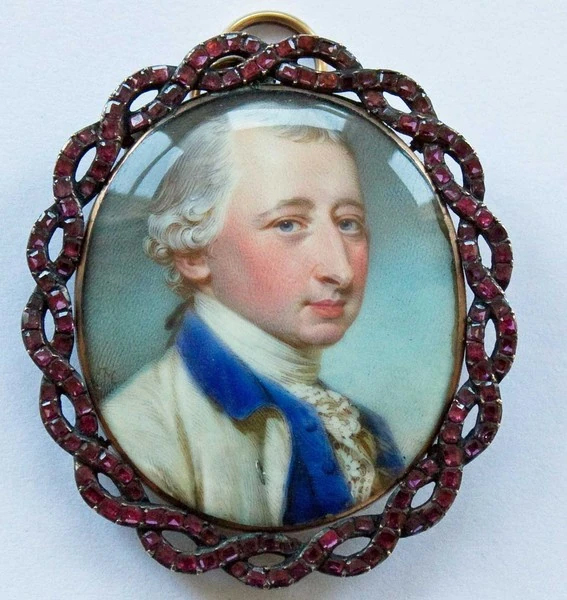When a soldier’s term of service was complete, he was discharged. Besides having arrears of pay and other obligations resolved, he was given a document called, aptly enough, a discharge. This piece of paper was vitally important for the soldier, for it proved that he had departed the army legally and was not a deserter. Military textbooks provided the standard text that was on the discharge, and because large numbers of men were often discharged at the same time regiments usually had printed forms providing the standard language on which each man’s personal details could be filled into blank spaces.
Discharges of many American soldiers survive in the pension files of the National Archives, provided to the pension office along with depositions and other documents to prove that each man’s service met the criteria for receiving a pension. The example shown here is that of Asaph Smith, a trooper in the 2nd Regiment of Light Dragoons commanded by Colonel Elisha Sheldon. It shows that Smith had served for six years, for which he had received the Badge of Merit authorized shortly before the war’s end (which meant that he could wear two chevrons on the sleeve of his coat; this is not to be confused with the Military Order of Merit, forerunner to the Purple Heart). Besides being signed by the regiment’s command and its adjutant, Smith’s discharge is signed by the commander in chief himself.
The first American pension act wasn’t passed until 1818, by which time many eligible veterans had lost their discharges. The British army, on the other hand, already had a well-established pension system in place by the time of the American Revolution. British soldiers appeared before an examining board at Chelsea Hospital in London; if awarded a pension, the pension board retained a copy of his discharge and the man was free to return to his native town where collected semi-annual payments at the nearest excise office. Thousands of soldiers’ discharges survive in the British National Archives, including the example shown here which is typical of the several formats used. It includes the man’s name, rank when discharged, his place of birth, age when discharged, trade that he’d learned before joining the army. This example includes his height, and sometimes details such as hair color and eye color are included. Particularly valuable is the sentence describing the reason for being discharged. The reverse side testifies that the man received everything he was due from the army, and this example includes a statement concerning his physical condition. The soldier himself signed it, or made his mark.
Because the British army was in continuous existence throughout this era, and because most enlistments were open-ended instead of being for a specific term, many soldiers had careers spanning several decades. This soldier, Alexander Andrew, spent twenty-five years in the 44th Regiment of Foot, part of it as a servant to the regiment’s commander; his full story can be found in Don N. Hagist, British Soldiers, American War (Yardley, PA: Westholme Publishing, 2012).











2 Comments
I was under the impression that the troops discharged at the end of the war received nothing more substantial than a promise of their arrears in the future.
It depends upon which army you refer to.
American soldiers received something more substantial than a promise of their arrears, but not much: they received a discharge, like the one shown above. That was a critical piece of paper, for it was the proof they’d need to claim arrears or other entitlements should they become available. It wasn’t until years later that the federal government began providing benefits to veterans of the American Revolution: land grants and disability pensions in 1790, pensions for destitute Continental soldiers in 1818, a broader pension act in 1832, etc.
Great Britain, on the other hand, had long since established pensions for soldiers, but here too the discharge was a critical document, presented to the pension board to document service.